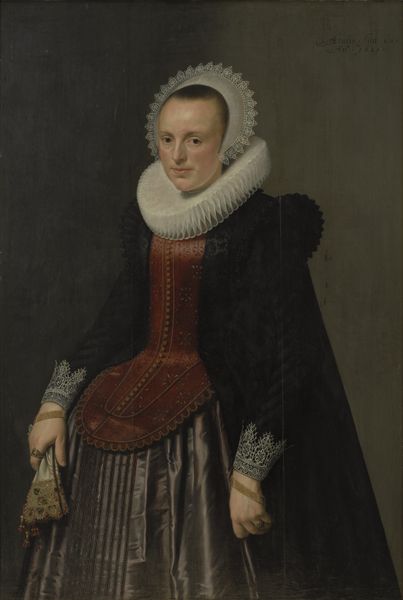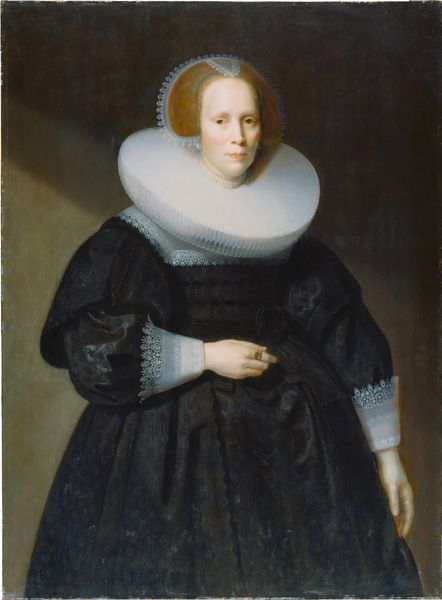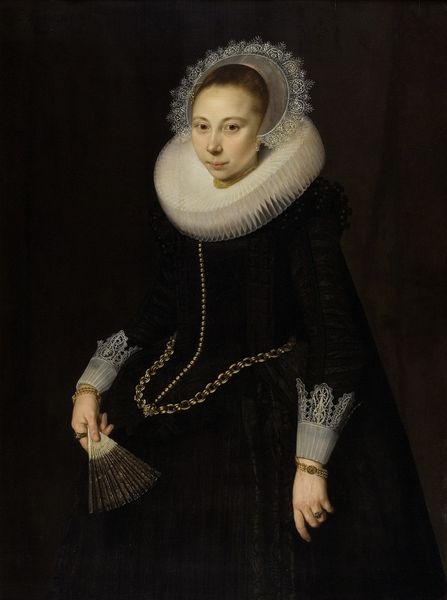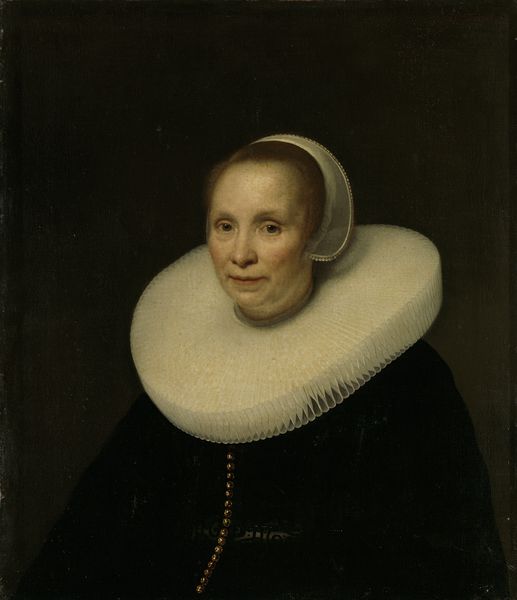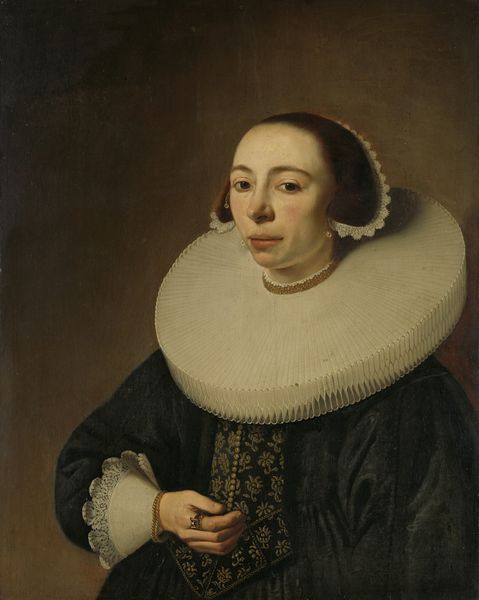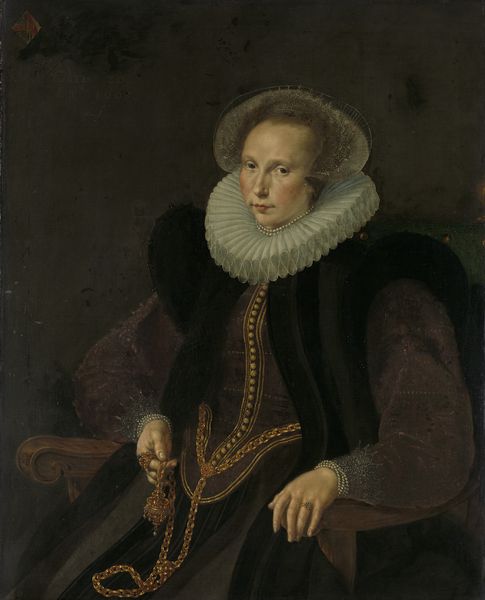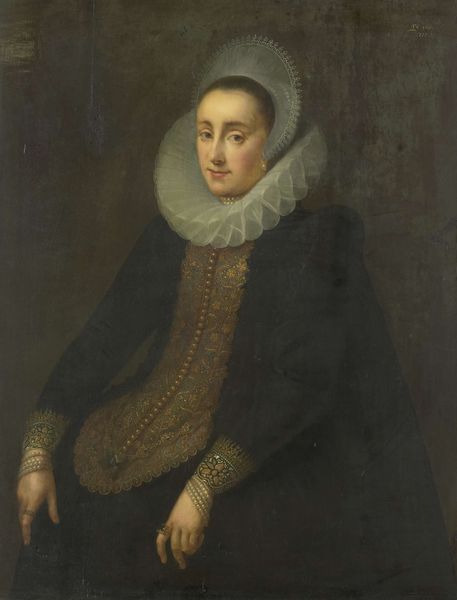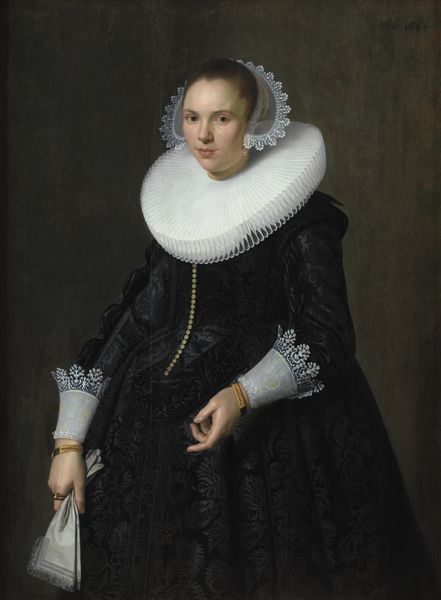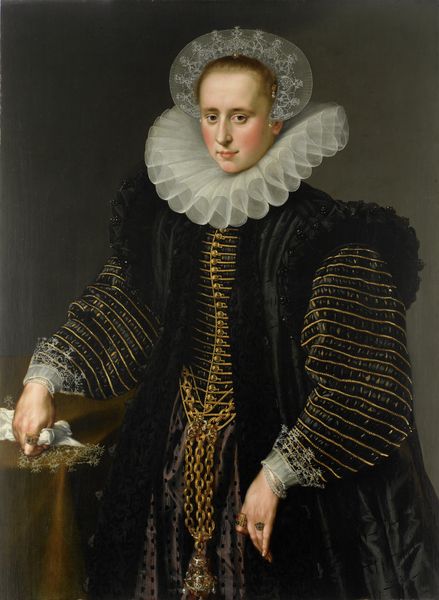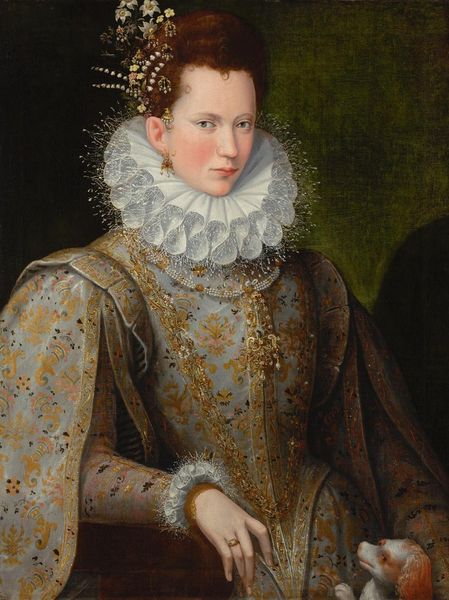
painting, oil-paint
#
portrait
#
baroque
#
dutch-golden-age
#
painting
#
oil-paint
#
figuration
#
academic-art
Dimensions: 108.5 cm (height) x 86 cm (width) (Netto)
Curator: Before us hangs "Portrait of a Lady" by Jan van Ravesteyn, painted in 1626. The work, an oil on canvas, resides here at the Statens Museum for Kunst. Editor: Oh, she’s got *presence*. It’s all so meticulously rendered but I feel…claustrophobia. All that lace feels like a cage, almost. Curator: The ruff, the gold embroidery…these elements do speak to the rigid societal structures and expectations of women in the Dutch Golden Age. Notice how the artist meticulously captures the details of her opulent attire. These garments were symbols of wealth and status, a visual language of belonging. Editor: Belonging…or being trapped? Look at her eyes, a little sad, a little… resigned? It’s subtle. You almost miss it, amidst the fabulous clothing and severe black background. It's fascinating how the gold catches the light in almost oppressive, glimmering ropes. Curator: Consider the psychology of portraits. These images immortalized their subjects, preserving their likeness for posterity. But, to what extent is this a genuine representation of the woman herself versus a presentation of her social standing? It feels significant that almost all of her dark gown fades to near black in the dark background. Editor: It feels less like getting to know *her*, and more like reading a report on her tax bracket! I wonder what stories she could have told. It makes me want to break her out of the frame, write her a secret history. Curator: But doesn't the portrait also offer us a valuable window into the fashions, the customs, and the artistic sensibilities of that era? By examining such works, we gain a better understanding of cultural memory. Editor: Perhaps. But looking closer, at how her pale hand clutches what appear to be rings and jewels... Maybe Ravesteyn was trying to hint at more than mere wealth. Maybe that tight clutch, that small downward glance, carries a quieter tale. Curator: I find the use of symbolism deeply moving. The visual vocabulary of each object or fabric provides insight into that woman's time and social structure. It asks us to consider how she navigated it. Editor: Absolutely. And now that I've spent some time here with her, she doesn’t seem as sad. Just…contemplative. It seems there’s real craft here – in suggesting her personality and position without saying it all outright. Curator: Indeed. She offers a moment of reflection. Editor: Beautifully put. And I want to thank her artist for it.
Comments
No comments
Be the first to comment and join the conversation on the ultimate creative platform.


